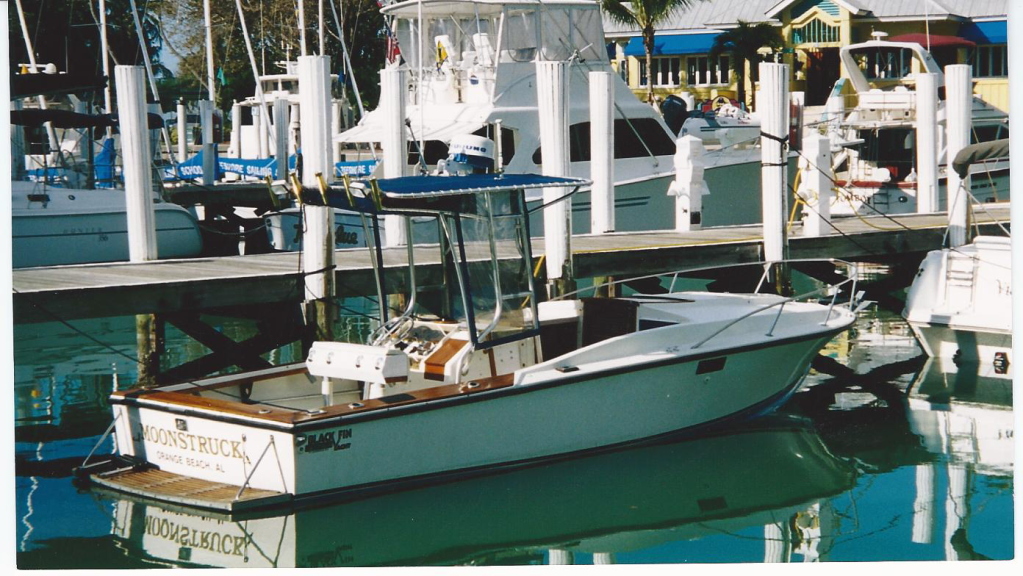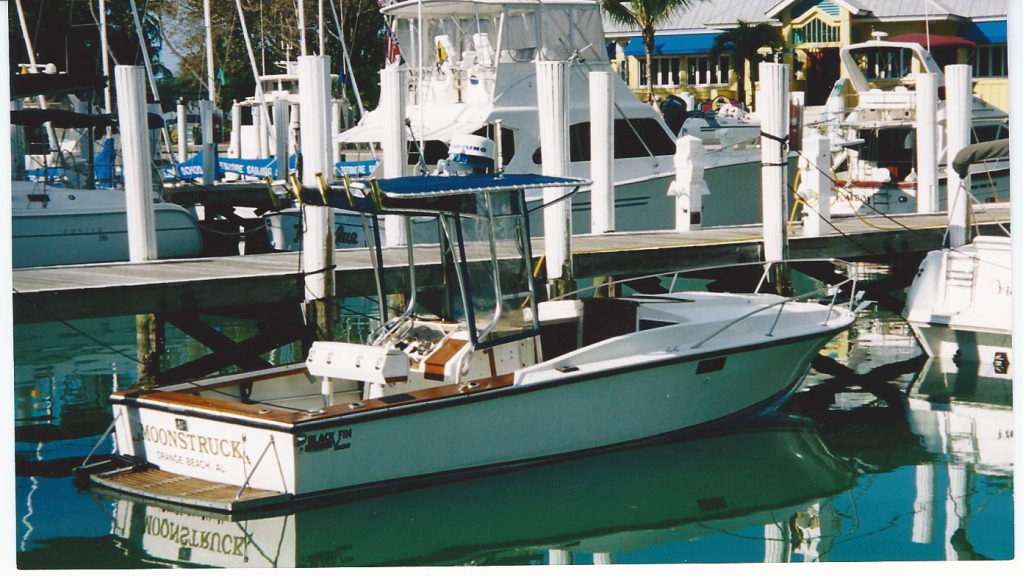Tacomasailor
Veteran Member
Hello
My wife and I are long time sailors with a fair amount of long distance cruising and live aboard experience. As I sneak thru my seventh decade of life I occasionally think that a nice big trawler would be less work and more comfortable. My wife has been convinced of that idea for years.
We are very interested in a DeFever 61 (80000#, 60’ LWL, 17’ beam) with a pair of Caterpillar 3208 (375 HP) engines. The engines have a little over 5700 hours on them. The previous 20+ year owners were meticulous in their maintenance.
I have a lot of experience with 35 – 120 HP diesels but no experience with larger and more manly diesels. I have done a LOT of reading about higher horsepower engines and have a couple questions about surveys, inspection, usage.
I have a computer program, based on Frank Beebe’s formulas, which calculates required horsepower delivered THROUGH the prop to the water to move the boat at a given speed.
My program results/predictions verify very well with data I collected in 1000 miles of operating a 60,000 pound 53’ trawler in the Sea of Cortez. That boat had a pair of Lehman 120s installed and carefully adjusted FloScans. The FloScan data was within about 5% of the calculated data based on refueling after a little over 1000 miles.
I have over 2000 engine hours of data for our sailboat with a Yanmar 4JH2E and the program data is within a few percent of that measured data.
I have used a chart produced by Caterpillar that shows prop HP –vs- Crank HP to determine 3208 engine speed –vs- Prop HP and calculated boat speed. The 375 HP engines are E-rated.
Three such data points for prop power and associated engine power are:
HP Delivered to water – Knots – RPM – Crank HP (375 HP engine)
51 HP – 7.9 Knots – 1325 RPM - 2.5 GPH - ~175 HP
73 HP – 8.7 Knots - 1500 RPM - 3.4 GPH - ~210 HP
111 HP – 9.4 Knots - 1750 RPM - 4.0 GPH - ~230 HP
QUESTIONS:
1) How does one operate a pair of overly powerful engines at economical cruise speed when a single engine can provide all the needed power at a low RPM? The DeFever 61 needs only 73 HP at the prop to move at 8.7 knots which can be delivered by ONE engine at 1500 RPM.
2) Assume I want to cruise at a S/L of 1.15 or 8.7 knots. My calculations show that the 3208s will be running at less than 1400 RPM which is way below the 2800 RPM max and 600 RPM below the torque peak of 2000 RPM. Will the engines survive long term running at such a low RPM and load? How much diesel longevity will such slow running lose?
3) Two different Caterpillar 3208 mechanics that work for Caterpillar Marine dealers have told me 5700 hours are not much in the 375 HP engine. They both will charge me about $400 per engine to do a pre-purchase inspection which includes cold and warm start analysis, sea trial, fuel, and engine oil analysis. How much confidence will I have in the engines once I receive the results of the inspection?
4) I don’t mind spending money on diesel, lord knows I could have purchased over 6,000 gallons of diesel for what I spent on sails and rigging over the last 15 years, but I would like to keep total fuel flow below 5 GPH while making an economical cruise speed. My program says the DeFever 61 can cruise at 8.4 – 8.9 knots for about 5 GPH (~2.7 GPH/engine). Does that sound reasonable?
My wife and I are long time sailors with a fair amount of long distance cruising and live aboard experience. As I sneak thru my seventh decade of life I occasionally think that a nice big trawler would be less work and more comfortable. My wife has been convinced of that idea for years.
We are very interested in a DeFever 61 (80000#, 60’ LWL, 17’ beam) with a pair of Caterpillar 3208 (375 HP) engines. The engines have a little over 5700 hours on them. The previous 20+ year owners were meticulous in their maintenance.
I have a lot of experience with 35 – 120 HP diesels but no experience with larger and more manly diesels. I have done a LOT of reading about higher horsepower engines and have a couple questions about surveys, inspection, usage.
I have a computer program, based on Frank Beebe’s formulas, which calculates required horsepower delivered THROUGH the prop to the water to move the boat at a given speed.
My program results/predictions verify very well with data I collected in 1000 miles of operating a 60,000 pound 53’ trawler in the Sea of Cortez. That boat had a pair of Lehman 120s installed and carefully adjusted FloScans. The FloScan data was within about 5% of the calculated data based on refueling after a little over 1000 miles.
I have over 2000 engine hours of data for our sailboat with a Yanmar 4JH2E and the program data is within a few percent of that measured data.
I have used a chart produced by Caterpillar that shows prop HP –vs- Crank HP to determine 3208 engine speed –vs- Prop HP and calculated boat speed. The 375 HP engines are E-rated.
Three such data points for prop power and associated engine power are:
HP Delivered to water – Knots – RPM – Crank HP (375 HP engine)
51 HP – 7.9 Knots – 1325 RPM - 2.5 GPH - ~175 HP
73 HP – 8.7 Knots - 1500 RPM - 3.4 GPH - ~210 HP
111 HP – 9.4 Knots - 1750 RPM - 4.0 GPH - ~230 HP
QUESTIONS:
1) How does one operate a pair of overly powerful engines at economical cruise speed when a single engine can provide all the needed power at a low RPM? The DeFever 61 needs only 73 HP at the prop to move at 8.7 knots which can be delivered by ONE engine at 1500 RPM.
2) Assume I want to cruise at a S/L of 1.15 or 8.7 knots. My calculations show that the 3208s will be running at less than 1400 RPM which is way below the 2800 RPM max and 600 RPM below the torque peak of 2000 RPM. Will the engines survive long term running at such a low RPM and load? How much diesel longevity will such slow running lose?
3) Two different Caterpillar 3208 mechanics that work for Caterpillar Marine dealers have told me 5700 hours are not much in the 375 HP engine. They both will charge me about $400 per engine to do a pre-purchase inspection which includes cold and warm start analysis, sea trial, fuel, and engine oil analysis. How much confidence will I have in the engines once I receive the results of the inspection?
4) I don’t mind spending money on diesel, lord knows I could have purchased over 6,000 gallons of diesel for what I spent on sails and rigging over the last 15 years, but I would like to keep total fuel flow below 5 GPH while making an economical cruise speed. My program says the DeFever 61 can cruise at 8.4 – 8.9 knots for about 5 GPH (~2.7 GPH/engine). Does that sound reasonable?



